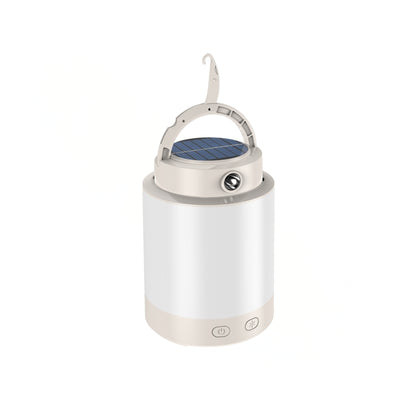
Spike Spots
Spike spots offer a simple and targeted way to add lighting to outdoor areas. Thanks to flexible placement, typically via a ground spike, these fixtures are easy to move and can highlight different elements in the garden. They are suitable for accentuating trees, shrubs, flower beds, or illuminating garden paths and driveways. With a focused beam of light, spike spots add depth and ambiance, enhancing the experience of the outdoor space after sunset.
-
 Spectrum-2W-400 lm-3000K - 6500K-IP 20247
Spectrum-2W-400 lm-3000K - 6500K-IP 20247 -
 Lucide
LucideLucide LED Garden spotlight SPIKE Black aluminum
-GU10-5W-320 lm-3000K-IP 54614 -
 Ledvance
LedvanceLedvance LED Floodlight Endura Dark gray aluminum
-20W-1700 lm-3000K-IP65-IK03332 -
 Ledvance
LedvanceLedvance LED Floodlight Endura Dark gray
-10W-800 lm-3000K-IP65-IK03283 -
 Spectrum
SpectrumSpectrum LED Camping lamp Solara Campo Cream ABS+PP
-2W-400 lm-3000K - 6500K-IP 20247 -
 Spectrum
SpectrumSpectrum LED Camping lamp Solara Campo Cream ABS+PP
-2W-400 lm-3000K - 6500K-IP 20247
Types of Spike Spots and Their Features
The choice of spike spot depends on your preferred light source and the required flexibility. There are mainly two types of spike spots:
-
LED Spike Spots with Integrated Light Source
These spike spots come with a built-in LED chip, which means the light source cannot be replaced separately. The advantage here is a compact design and a long LED lifespan. They are usually energy efficient and deliver consistent light output during the entire lifetime of the fixture.
-
Spike Spots with GU10 Socket
Spike spots with a GU10 socket allow you to replace the light source. This offers flexibility in choosing the light color, beam angle, and dimmability. If the light source is defective, it can be replaced easily without having to change the entire fixture. Make sure the selected GU10 bulb is suitable for outdoor use and respects the fixture's IP rating.
Practical Considerations for Installing Spike Spots
For a durable and safe installation of spike spots, there are several important factors to consider. This section answers frequently asked questions from installers.
Water Resistance and Protection: The IP Rating of Spike Spots
A common question is what IP rating a spike spot should have for a specific location. The IP rating (Ingress Protection) indicates the degree of protection against dust and water. For spike spots, which are often placed directly in the ground or among plants, a higher IP rating is recommended.
| IP Rating | Protection | Typical Application for Spike Spots |
|---|---|---|
| IP44 | Splash-proof | Sheltered places, such as under a porch or carport. |
| IP65 | Dust-tight and jet water-resistant | Outdoors in exposed areas, directly in the garden or along paths. |
| IP67 | Dust-tight and protected against temporary immersion | Placement in the ground where water may accumulate, such as after heavy rain. |
| IP68 | Dust-tight and suitable for permanent immersion | Ideal for pond edges, damp soils, or locations where water remains for extended periods. |
When installing spike spots in the garden, make sure the IP rating aligns with the conditions. If you place a spike spot in moist soil—even if not directly under water—choosing an IP67 or IP68 fixture may help prevent long-term issues.
Choosing the Right Light Color and Brightness for the Desired Ambiance
How do you determine the right light color and brightness (lumens) for spike spots? This depends on the intended effect and the surrounding environment.
-
Light Color (Kelvin):
- 2200K - 2700K (extra warm white to warm white): Creates a cozy, inviting atmosphere and is often chosen to accentuate plants, seating areas, or decorative elements.
- 3000K (warm white): A neutral, generally applicable light color that gives a pleasant glow without being too cold. Works well for general garden or pathway lighting.
- 4000K (cool white): Functional and bright, suitable for illuminating paths, driveways, or objects that need to be clearly visible.
- Brightness (Lumens): The required lumen value varies. For subtle accent lighting, lower lumen values suffice (e.g., 200-400 lumens). If the goal is to brightly illuminate a path, a higher lumen value (400-800 lumens or more) is preferable. Keep in mind that overly bright lighting can be disruptive in a garden.
Connecting Spike Spots: Low Voltage vs. Mains Voltage
Installers often ask about the difference between 12V (low voltage) and 230V (mains voltage) spike spots and what this means for installation. Both systems have their own installation methods and safety considerations.
-
12V Low Voltage Systems
These systems use a transformer to convert mains power to a safe 12V. The advantage is that cables do not need to be buried as deeply (often only 10-20 cm) and installation is simpler. The cables are more flexible and less risky to install yourself. Many 12V systems are 'plug-and-play', using connectors that speed up installation. This makes 12V a good option for DIY enthusiasts or when flexibility in layout is desired.
-
230V Mains Voltage Systems
These spike spots are connected directly to the mains. The cabling must be buried deeper (at least 60 cm) and be of the correct type (YMVKas or comparable). All connections must be waterproof using appropriate connection sleeves. This usually requires more expertise and a residual-current device is mandatory for safety. The benefit of 230V is more stable power supply over longer distances and the ability to use more powerful lights.
Maintenance and Lifespan of Spike Spots
LED spike spots are known for their long lifespan, often up to 50,000 operating hours, which equates to many years of use. Regular maintenance is straightforward and helps ensure proper functionality. This includes occasionally cleaning the lens to guarantee optimal light output and checking the ground spike for stability, especially after strong winds or heavy rain. Fixtures made from high-quality materials like aluminum or stainless steel contribute to the durability and weather resistance of spike spots.




